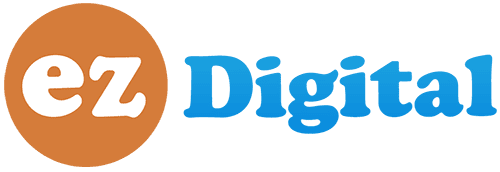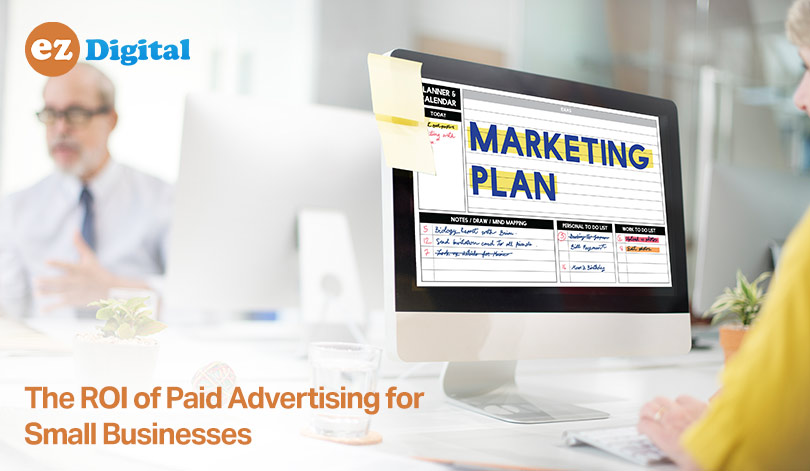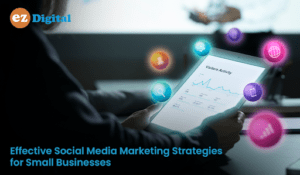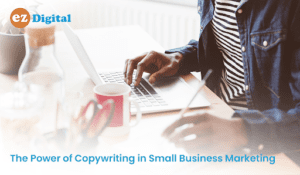Are you doing everything right, yet there’s no significant increase in the number of visitors on your site, or your conversions aren’t spiking like they should? Well, if the answer is yes, it’s high time you start contemplating the idea of paid advertising to increase your digital marketing ROI. As per research, paid advertising can have a 200% return on investment for small businesses on average and a 50% higher lead conversion rate than visitors who visit through organic links.
Source:
In today’s fierce competition where many entrepreneurs are balancing tight budgets while investing in growing their business, paid advertising can sound like a gamble. So, the question is how do you determine which investment will truly deliver a return?
Well, here’s a guide dissecting the core of digital marketing ROI (Return on Investment) from paid advertising tools, how they can propel business growth, and whether running paid ads is the right move for your business!
A Brief Overview of ROI in Paid Ads
Before you invest even a penny in PPC (pay-per-click) for small businesses or paid aids, you need to understand what ROI really means in this context. Primarily, ROI is a performance measure that can evaluate the efficiency of an investment. Return on investment in digital marketing is calculated by comparing the profit generated from an investment to its cost. In simpler terms, ROI in paid advertising describes the money you are making from every dollar spent on advertising.
If you are working with a PPC marketing agency and running paid ads, your ROI should reflect both the immediate and long-term value it creates for your business. The more revenue you earn on the money spent, the higher your ROI will be. However, you always need to remember that digital marketing ROI isn’t just about the short-term gains. Paid advertising can also help to build brand awareness and customer loyalty, which leads to future sales. See, now these are the benefits that aren’t always measurable.
Why Should Small Businesses Consider Paid Advertising?
You must be thinking, “Why should I, as a small business, invest in paid advertising when organic reach is free?” To help you get out of this dilemma, here is some info on how paid advertising can help increase digital marketing ROI!
-
Targeted Reach:
Most businesses use organic marketing strategies like social media posts or blogs to improve their outreach. However, when they do so, they use search engines and social media algorithms to push their content to the right audience. This can take time, and organic methods often have uncertain outfits. However, paid advertising allows you to laser-target your desired demographic by age, location, interests, or even behavior. Especially when you know exactly who your customer is, paid ads can get your message through your marketing pipeline faster and prove to be a cost-effective advertising method.
-
Instant Results:
Organic marketing is crucial, but it’s also a long-term game. To stay ahead of your competitors and reap the online advertising benefits, you will need to create content and build your online presence over time consistently. On the other hand, paid ads deliver immediate visibility. Once your ad campaign is launched, you can start seeing clicks, website traffic, and conversions within hours. Especially if your brand is launching a product or running a promotion, there’s no better option than paid ads to hike digital marketing ROI.
-
Budget Control
One of the best features of paid advertising is that you can scale your investment based on your budget. You don’t need to spend thousands to get started. Whether it’s Google Ads, Facebook, or Instagram, platforms allow you to set daily or monthly spending caps, so your ad campaign never goes overboard.
Types of Paid Advertising
The digital marketing ROI through paid ads is dependent on the types of ads you run. Every type is different depending on your industry, audience, and goals, and these include:
- Pay-Per-Click (PPC) Advertising
- Social Media Advertising
- Display Advertising
- Influencer Marketing
Key Metrics to Measure the ROI of Paid Ads
If you want to yield substantial returns with paid advertising, you also need to keep your finger on the ad campaign performance. To do this, you will have to analyze the following key metrics:
- Cost Per Click (CPC): This is the amount you pay every time someone clicks on your ad. The lower your CPC is, the more efficient your ads are.
- Click Through Rate (CTR): CTR defines the percentage of people who see your ad and then actually click on it. So logically speaking, a higher CTR would mean your ad is more relevant and engaging.
- Conversion Rate: This is the % of visitors who complete a desired action intended by the ad. For instance, they click on the ad and purchase a product or fill out a contact form. In digital marketing lingo, high conversion rates are the ultimate indicators of ad success.
- Customer Lifetime Value (CLV): This metric considers how much revenue a customer will generate for your business over time. So, CLV is crucial for measuring the long-term ROI of your ads.
- Return on Ad Spend (ROAS): This tells you how much revenue is generated for every dollar spent on ads. A ROAS of 4:1 means you have earned $4 for every $1 spent.
Conclusion
The competition in today’s digital ecosystem is fierce, and small businesses today are constantly looking for ways to stretch their marketing dollars. Although there are numerous organic ways to drive conversions and bolster ROI, businesses often tend to avoid paid advertising. However, if you want to maximize the impact of your small business marketing strategies, it’s essential to use paid ads along with other budget-friendly marketing tactics. Trust us when we say this: paid ads can reap significant yields when PPC is done right. Want to improve your digital marketing ROI and are looking for the best PPC management services? Reach out to the team of professionals at EZ Digital today!




